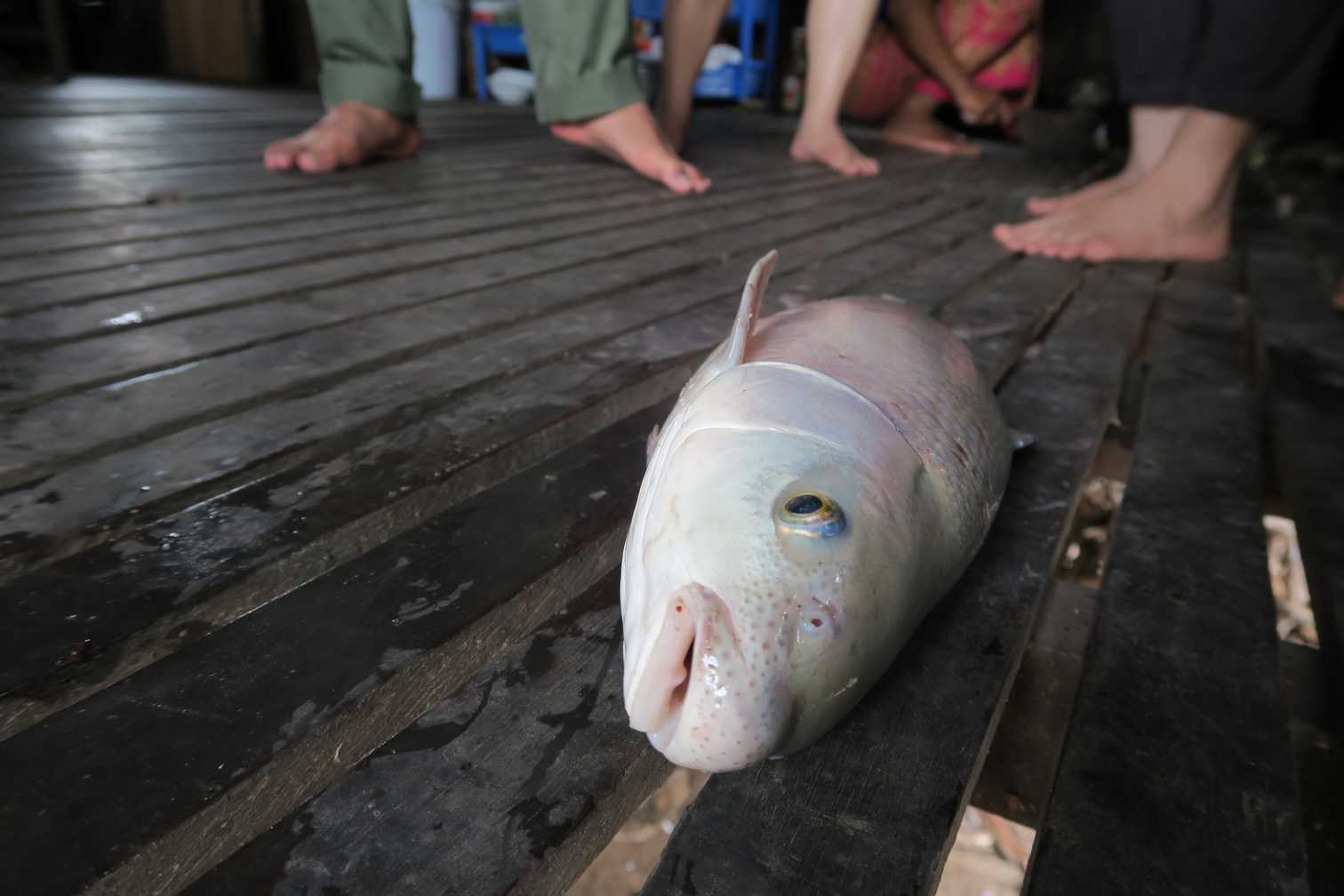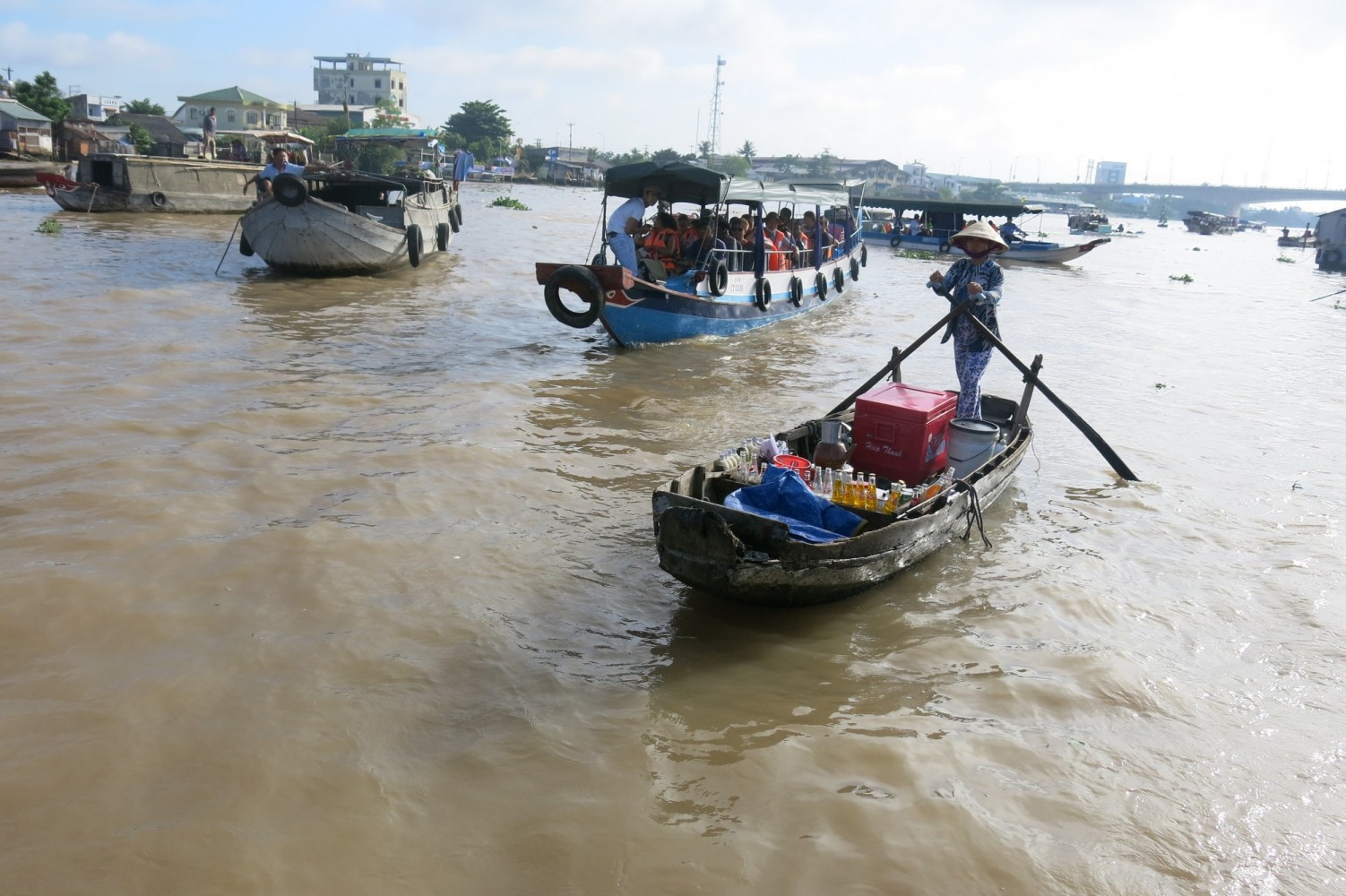IMPLEMENTATION of the Lower Sesan 2 (LS2) hydropower project in northeast Cambodia is underway despite civil society organisations and local residents expressing concerns over possible serious impacts on the environment and natural resources.
Tag: dams
Locals differ on impacts from Cambodia dam project
Cambodia’s Lower Sesan 2 (LS2) hydropower project brings about concerns to the locals, either those refusing to move or those accepting the resettlement deals. According to the project’s environmental impact assessment report, 4,785 people from seven villages must relocate from four communes in the reservoir area. It is estimated that 78,000 people upstream would lose access to migratory fish, and 22,000 people immediately downstream would be negatively affected by changes in river hydrology, water quality and fish numbers.
Lower Sesan 2: Construction resumed, troubles restarted
Thousands of workers, mostly Chinese, are hustling working on the Lower Sesan 2 (LS2) dam site in Northeast Cambodia, and nearly 40% of their work is complete. The US$816 million project was approved by Cambodia’s Council of Ministers in 2012. However, in November 2014, the dam construction was stopped due to environmental controversy and opposition from communities and some NGOs, but has been re-started since March 2015. And, as construction has resumed, the communities concerns have been reprised and the trouble has restarted.
Dams ‘destroying Mekong fish stock’
MEKONG River fishermen have already suffered dramatically from dams and irrigation works, which have decimated fish stocks and undermined livelihoods that supported families for generations.
Lower Sesan 2 Dam jeopardizes lives of millions of Cambodia’s river dwellers
With an increasing need for energy, the Royal Cambodian Government has spent nearly a billion US dollars on a hydroelectric dam that it claimed was necessary for industry. However, the real social and economic cost of the dam, which will flood an area equivalent to a small province and submerge thousands of families’ houses, might far exceed its construction cost as it might deprive millions of Cambodians of their most important food staple.
Vietnamese plea to Thailand: Don’t divert the Mekong
Thailand Prime Minister Prayut Chan-o-cha voiced plans to use water from the Mekong and Salween rivers to fill dams that have run low because of drought and poor water management. But the PM’s remarks have caused shockwaves in the Mekong Delta, which would be directly affected if such a project was to go ahead.
Southeast Asian Journalists Explore Dams and their Impacts
Hydropower development is racing across Southeast Asia’s Mekong region, and Internews’ Earth Journalism Network (EJN) is helping journalists investigate the costs and benefits for the environment and communities. As part of the USAID-sponsored Mekong Partnership for the Environment (MPE) program, EJN supported 15 journalists to meet researchers, affected communities, Cambodian government officials and local NGOs in a workshop last week, “Understanding Energy: The Benefits and Costs of Hydropower”, focusing on hydropower dams in Cambodia.
Gov’t Sweetens Deal for Sesan Dam Families
As work moves ahead on the controversial Lower Sesan 2 dam in Stung Treng province, the Ministry of Mines and Energy met Tuesday with representatives of more than 250 families still refusing to make way for the dam’s reservoir.
Poor water management hits Delta
Viet Nam’s Mekong Delta, which is home to 18 million people, has suffered adverse consequences due to poor water resource management, a researcher at a Can Tho University think tank has said.
Mekong Countries Voice Major Concerns Over Laos Dam
A public consultation organized by the Mekong River Commission was held in Pakse, Laos, last week, where opponents continued to call for Laos to reconsider a controversial dam project.











